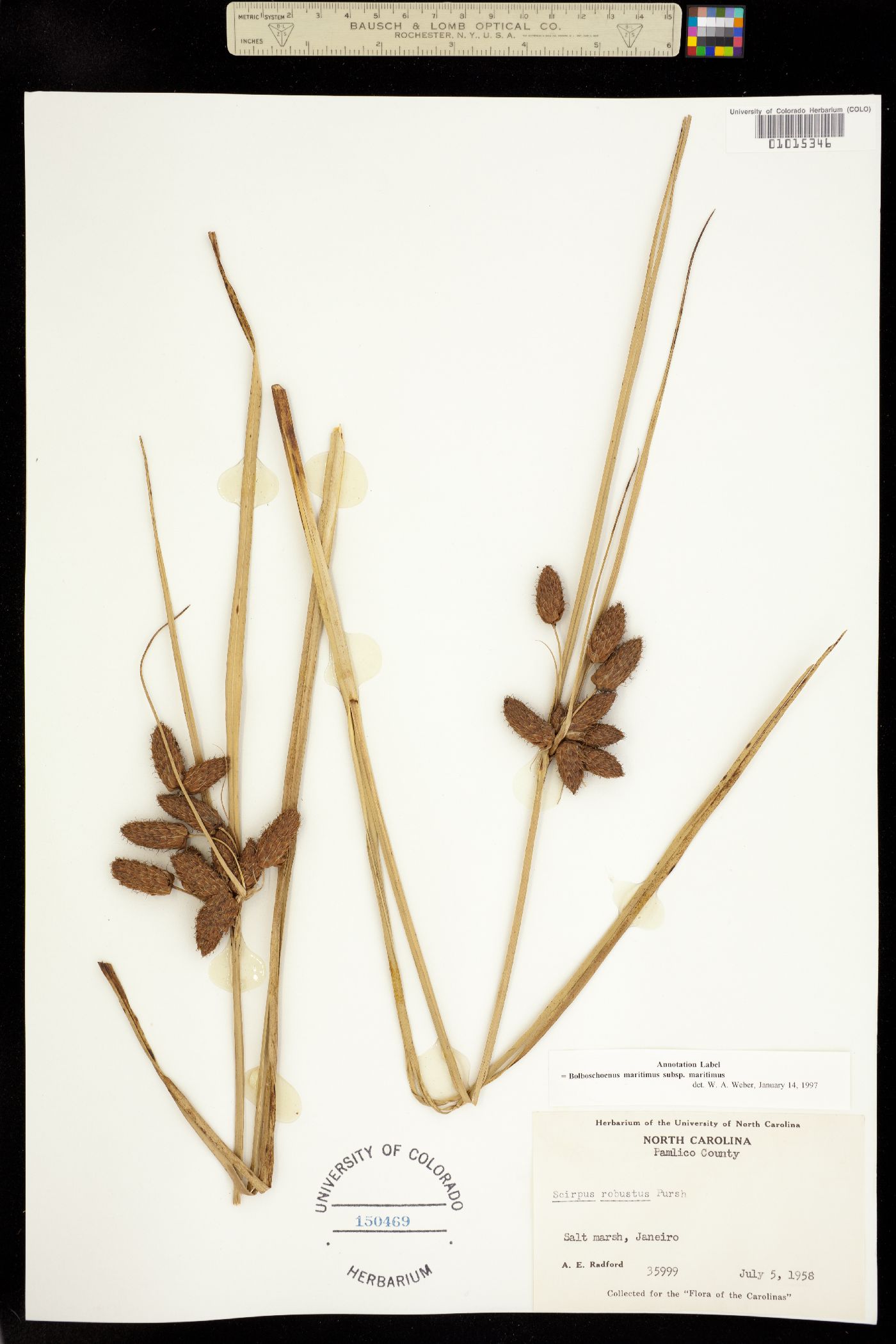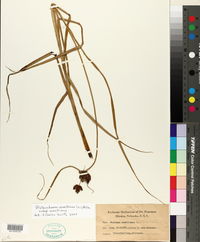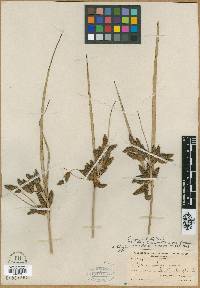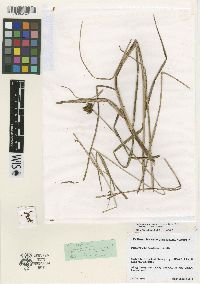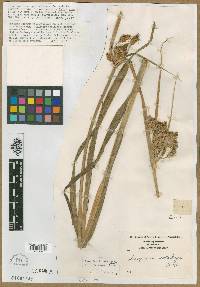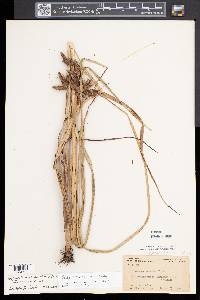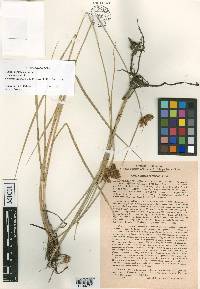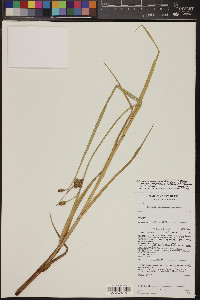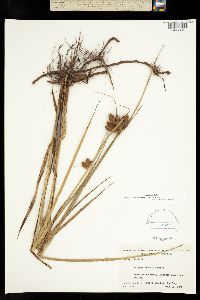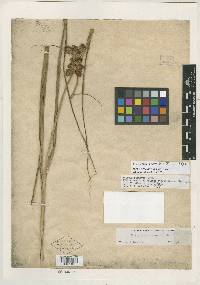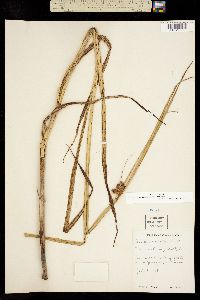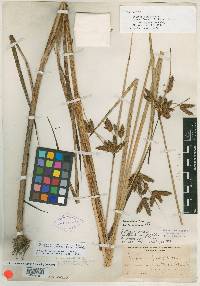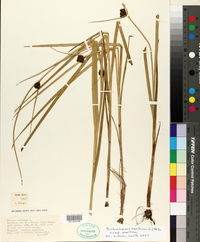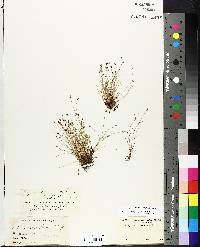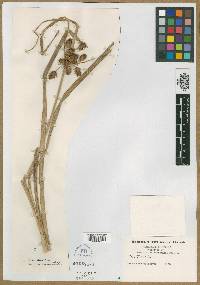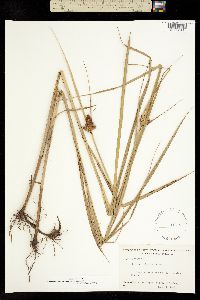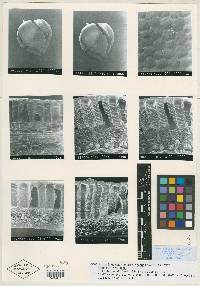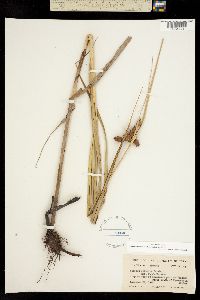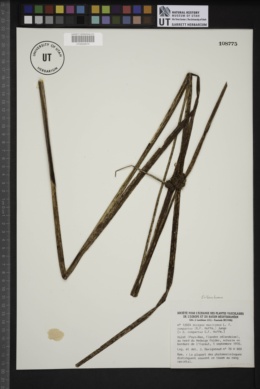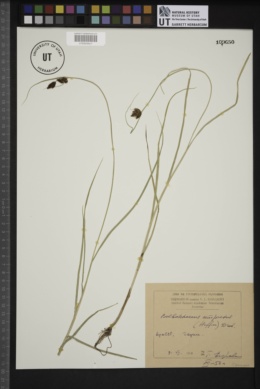Bolboschoenus maritimus subsp. maritimus
|
|
|
|
Family: Cyperaceae
[Bolboschoenus compactus (Hoffm.) Drobow, moreScirpus macrostachyos Lam., Scirpus maritimus f. agonus (Beetle) Fernald, Scirpus riparius Pers., Scirpus strobiliferus] |
Scales dark to medium brown. Styles all or mostly 3-fid. Achenes dark to medium brown, obtusely compressed trigonous with broadly rounded abaxial angle or some biconvex in same spikelet. Fruiting summer. Brackish to saline coastal shores and marshes; 0 m; N.B., P.E.I., Que.; Maine; Europe; s Africa. It is possible that the plants here placed in Bolboschoenus maritimus subsp. maritimus were introduced from Europe or were produced in North America by introgression from B. robustus or B. novae-angliae. Some specimens from the northern Atlantic coast are intermediate between B. maritimus subsp. maritimus and subsp. paludosus in having many bifid styles and only a few trigonous achenes. Collections from an abandoned oil-well site in southern Ontario (Lambton County) probably represent introductions from Europe. They have very slender leaves and culms, trifid styles, and narrowly cylindric spikelets. Although these specimens resemble some plants of B. maritimus in the broad sense from southern Europe, as well as B. glaucus × B. maritimus hybrids, they cannot be definitely identified because they lack achenes.
Perennial herb with tuber-bearing rhizomes 0.5 - 1.5 m tall Leaves: several, three-ranked, alternate, elongate, 2 - 12 mm wide, more or less flat, linear, parallel-veined, keeled beneath, with a sheathing base that encloses the stem (margins of the sheath fused together). Sheaths reaching more or less middle of culm, tubular with a concave or convex apex, veins diverging near apex (leaving a thin, veinless, triangular area), usually membranous at mouth. Inflorescence: composed of solitary and two- to ten-clustered spikelets, subtended by spirally arranged leaf-like bracts. Bracts (that surpass inflorescences) one to five, unequal, some elongate, to 6 mm wide. Rays (branches of inflorescence) one to four, to 8 cm long. Flowers: minute, subtended by a floral scale, lacking sepals and petals, with two to six bristles. Bristles weak, brown, to half the length of the achene, deciduous. Stamens three, exserted. Anthers yellow, 2 - 4 mm long. Pistil one. Style linear, all or mostly three-cleft. Fruit: a one-seeded achene, dark to medium brown, 2.5 - 4 mm long, 2 - 3 mm wide, reverse egg-shaped with a rounded or nearly truncate (cut straight across) apex bearing a tiny beak, bluntly compressed three-angled or biconvex (within same spikelet), glossy. Seed with a thin, non-adherent wall. Culm: stout, 0.5 - 1.5 m long, 3 - 8 mm wide, strongly three-sided, solid, cormose at the base. Spikelets: one to forty, most stalkless, 7 mm - 4 cm long, 7 - 10 mm wide, egg-shaped to lance-shaped with a tapering to rounded base and pointed apex, with more than 25 floral scales. Scales spirally arranged and loosely overlapping, dark to medium brown, obscurely streaked-spotted, 5 - 8 mm long, 3 - 4 mm wide, minutely hairy beneath, often becoming hairless, membranous, translucent, with a notched tip bearing a stiff, 1 - 3 mm long bristle (awn). Similar species: The variety paludosus differs by having blunt spikelets and two-cleft styles. The similar Bolboschoenus fluviatilis differs by having 3.5 - 5.5 mm long, sharply three-angled achenes and flower bristles that are stout and persistent. Flowering: late May to October Habitat and ecology: Some populations may have been introduced from Europe or be the result of introgression between Bolboschoenus robustus or B. novae-angliae. Roadside ditches and other wet areas where salt may accumulate. Occurence in the Chicago region: native Etymology: Bolboschoenus comes from the Greek words bolbos, meaning swelling or bulb, and schoenus, meaning rush, referring to the bulbous tubers which makes it different from the genus Schoenus. Maritimus means "of or from the sea." Author: The Morton Arboretum |

